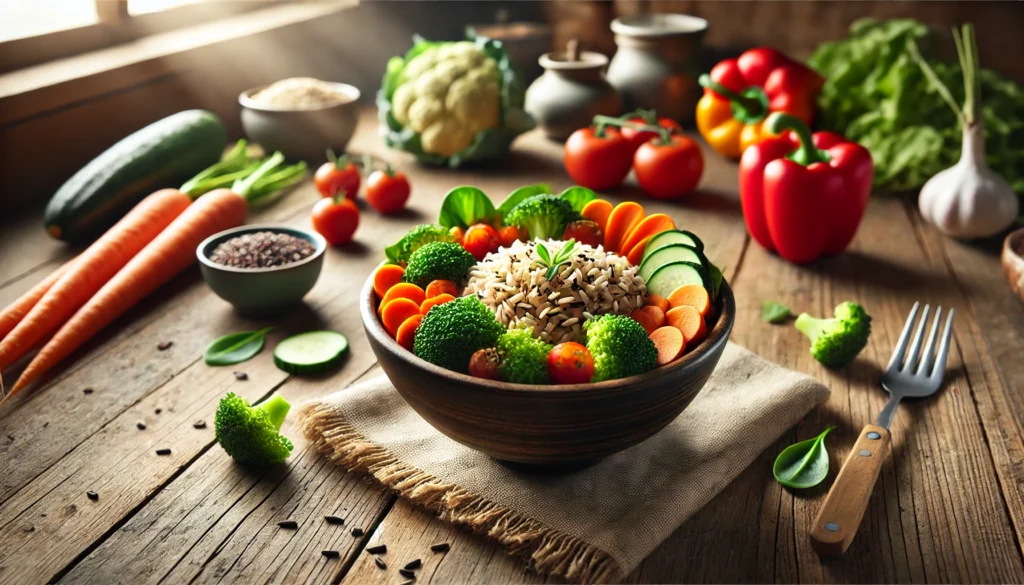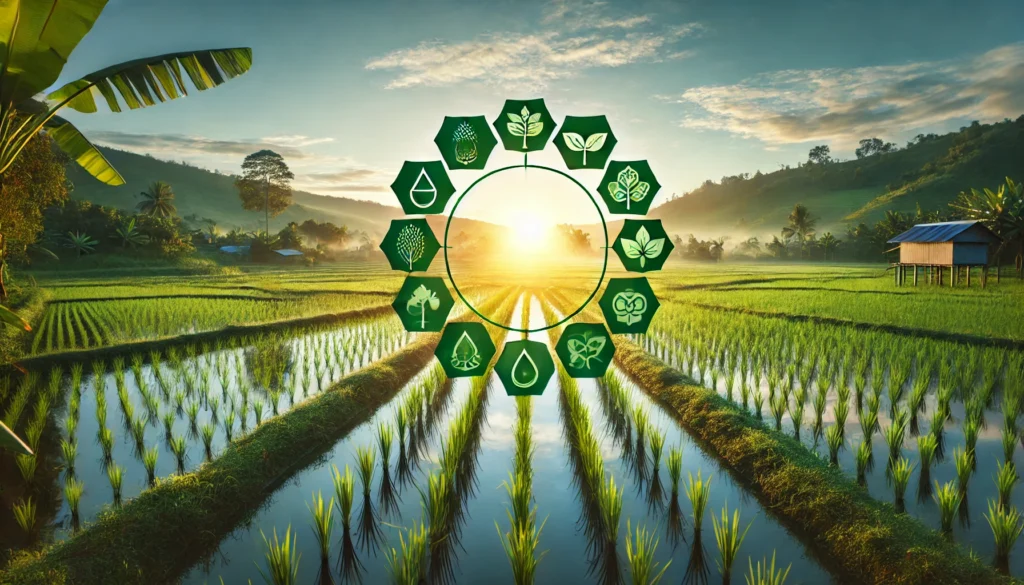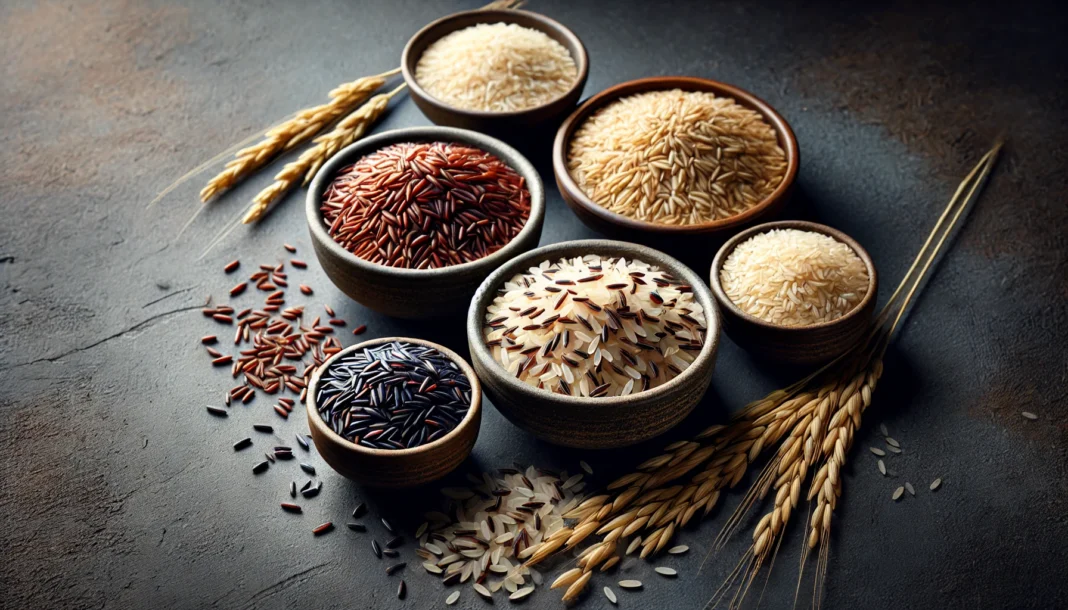In recent years, the plant-based diet has gained significant popularity, especially among individuals who are seeking to improve their health, reduce environmental impact, and promote ethical eating habits. One common question among those new to plant-based eating revolves around the role of certain staple foods, such as rice. As one of the most consumed foods worldwide, rice plays a central role in many cuisines. However, when transitioning to a plant-based or vegan diet, it is important to understand its classification and how it fits into the broader framework of plant-based nutrition.
You may also like: How to Start a Whole Food Plant-Based Diet: A Beginner’s Guide to Healthier Eating
Rice is often regarded as a simple and nutritious food, but the question arises: is rice a plant-based food? This article delves deep into understanding rice’s place in a vegan diet, examining how it aligns with the principles of plant-based eating. We will explore whether rice is considered vegan, what makes rice suitable or unsuitable for a plant-based lifestyle, and clarify common misconceptions surrounding rice, such as the distinctions between white rice and other varieties. Additionally, we will provide practical guidance for those who wish to incorporate rice into their meals while adhering to plant-based nutrition principles.
Throughout this article, we will address key topics such as: Why is it called plant-based rice? Is rice vegan? Do vegans eat rice? and more, providing clarity and scientifically-backed insights. Understanding these aspects will empower individuals to make informed choices about their dietary preferences, whether they are fully committed to a vegan lifestyle or simply exploring plant-based eating options.
By the end of this comprehensive guide, you will have a clear understanding of whether rice qualifies as a plant-based food, its nutritional value, and how it fits into a whole-food, plant-based diet. Let’s begin by exploring what it means for food to be considered plant-based and why rice is often discussed in this context.
Understanding Plant-Based Eating and What Makes Rice Plant-Based
The concept of plant-based eating has evolved from being primarily associated with veganism to becoming a more flexible approach to nutrition. Plant-based eating emphasizes the consumption of whole, minimally processed plant foods, such as fruits, vegetables, legumes, grains, nuts, and seeds. The goal is to focus on foods that are predominantly derived from plants, avoiding animal products such as meat, dairy, and eggs.
Rice, being a whole grain, is derived from a plant source and, thus, inherently fits into the framework of plant-based eating. However, the real question lies in whether rice is considered “plant-based” in a practical sense, especially when it comes to the nutritional profile and its impact on overall health. While rice may be categorized as a plant-based food, it’s essential to consider the type of rice and how it is prepared, as these factors can affect its alignment with a whole-food, plant-based lifestyle.

What Makes Rice Vegan?
The question “Is rice vegan?” is one that often arises for those considering plant-based diets. Veganism, which excludes all animal-derived products, is generally rooted in ethical, environmental, and health-conscious reasons. Rice, being a plant product, does not contain any animal-derived ingredients, making it inherently vegan. There are no animal byproducts involved in its cultivation, processing, or cooking—unless additives or flavorings are used in certain pre-packaged rice dishes that may include dairy or other non-vegan ingredients.
However, the vegan status of rice isn’t always black and white. As a versatile food, rice can be prepared in various ways, some of which may not align with vegan principles. For instance, certain rice dishes in restaurants or packaged rice products may contain animal-derived ingredients such as butter, cream, or broth. Therefore, while rice itself is a plant-based food, it’s crucial for vegans to be mindful of how rice is prepared to ensure it adheres to their ethical standards.
Additionally, it’s important to note that not all rice varieties offer the same nutritional benefits. For example, white rice, while still considered a plant-based food, is often less nutritious than brown rice due to the refining process that removes the bran and germ. The refined nature of white rice strips away many of its fiber, vitamins, and minerals, which makes it less of a “whole food” in the context of plant-based nutrition. This is why whole-grain rice varieties like brown rice or wild rice are often preferred within the plant-based community—they offer more fiber and nutrients that align better with the principles of whole-food, plant-based nutrition.

Frequently Asked Questions: Is Rice a Plant-Based Food?
1. Can vegans eat rice at restaurants, or is it safer to cook it at home?
Yes, vegans can eat rice at restaurants, but it’s essential to ask how it’s prepared. While plain steamed rice is typically vegan, many restaurants cook rice with ingredients like chicken broth, butter, or ghee, which are not plant-based. To ensure the rice is truly vegan, ask whether it’s made with only water and plant oils. When dining out, especially in cuisines like Indian, Chinese, or Mediterranean, rice dishes can vary widely in their preparation. While rice is inherently a plant-based food, cross-contact with animal products in shared kitchens may be a concern for those who strictly avoid any contamination, making home preparation the more reliable choice for many.
2. Why is it called plant-based rice if all rice comes from plants?
The term “plant-based rice” often refers to rice that is either whole-grain, minimally processed, or paired with exclusively plant-derived ingredients. So, while all rice technically comes from a plant, calling it plant-based rice serves as a shorthand to emphasize that it hasn’t been altered with non-vegan additives like dairy-based flavorings or animal-based broths. In a broader nutritional context, plant-based rice also suggests varieties that support whole-food eating patterns, such as brown, red, black, or wild rice, which retain more fiber and micronutrients. The phrase is also gaining traction in food marketing as consumer demand grows for transparently vegan and health-conscious options. Thus, “plant-based rice” is less about rice’s origin and more about how it’s processed, served, and integrated into the broader plant-based diet.
3. Is white rice vegan, or is it too processed to be considered plant-based?
Yes, white rice is vegan. There are no animal products used in its production, making it suitable for vegan diets. However, some people question whether white rice is plant-based because it’s been stripped of the bran and germ, reducing its fiber and nutrient content. In strict whole-food plant-based circles, white rice may not be the preferred choice, but that doesn’t mean it’s excluded. It still qualifies as plant-based rice, especially when used in moderation or paired with nutrient-dense plant foods like legumes, vegetables, and tofu to create a balanced meal.
4. How does rice support a whole-food, plant-based lifestyle long term?
Rice is a foundational food in many cultures and can serve as a reliable energy source in a whole-food, plant-based diet. Whole grain varieties like brown rice, black rice, and red rice contain more fiber, magnesium, and antioxidants than white rice, supporting cardiovascular and digestive health. Over the long term, rotating rice with other plant-based grains—such as quinoa, farro, or millet—can provide nutritional diversity while preventing dietary monotony. While rice is a plant-based food, combining it with legumes (like beans or lentils) can form complete proteins, especially important for those not consuming animal products. For those wondering is rice a plant-based food that can carry them nutritionally over the years, the answer is yes—with attention to variety and balance.
5. Are there any lesser-known rice alternatives that align with plant-based eating?
Yes, several rice alternatives not only align with plant-based eating but may even outperform traditional rice in terms of nutrition. Ancient grains like sorghum, teff, and amaranth can serve similar culinary functions while offering higher protein, iron, or calcium content. These grains can be cooked and served like rice, fitting seamlessly into meals typically built around plant-based rice. Even cauliflower rice, though not technically rice, is popular among plant-based and low-carb eaters for its fiber and micronutrient density. Exploring these alternatives adds variety and makes plant-based eating more adventurous and customizable, which is key to long-term dietary adherence.
6. Can vegans eat rice every day, or is variety essential for balanced nutrition?
Vegans can certainly eat rice daily, but it’s crucial to include a diverse range of other plant foods to meet all nutritional needs. While rice is vegan and provides energy and some minerals, it’s relatively low in protein and lacks certain essential amino acids when eaten alone. To make daily rice consumption sustainable, pair it with lentils, chickpeas, or leafy greens to balance macronutrients and micronutrients. Remember, is rice vegan isn’t the only question—how it’s incorporated matters too. Those who build their meals thoughtfully around plant-based rice can enjoy it frequently without compromising nutritional integrity.
7. Does rice production align with the ethical and environmental goals of plant-based living?
Rice is a plant-based food, but its environmental impact varies depending on farming practices. Traditional rice farming can be water-intensive and may contribute to methane emissions, a greenhouse gas. However, newer sustainable farming methods like System of Rice Intensification (SRI) are helping to reduce water usage and improve soil health. For ethically minded eaters asking is rice a plant-based food that aligns with their environmental goals, the answer is increasingly yes—especially when sourced from eco-conscious producers. Choosing organic or sustainably farmed rice can further support the values of plant-based living.
8. How does rice fit into cultural plant-based traditions around the world?
Rice plays a central role in plant-based cuisines across the globe, often forming the base of nourishing, time-honored dishes. In Indian cooking, rice is paired with lentils in dishes like khichdi, while in Japan, it’s often enjoyed with seaweed and fermented soy products. African and Caribbean plant-based traditions use rice alongside beans, okra, and spicy stews. These global examples show that rice is more than a filler—it’s a culturally embedded, nutrient-rich base for diverse plant-forward meals. When people ask do vegans eat rice, the answer reflects a rich global tradition that validates rice as a pillar of sustainable, satisfying cuisine.
9. Can fortified rice provide health benefits beyond traditional varieties?
Fortified rice, often enriched with B vitamins, iron, or even omega-3s, can offer enhanced nutritional value for individuals following plant-based or vegan diets. This can be particularly useful in regions where nutrient deficiencies are common or in populations with limited access to dietary variety. While rice is vegan food in its natural form, fortification can make it more functionally beneficial for supporting long-term health. Some fortified rice products are designed with vegans in mind and may be labeled specifically as plant-based rice on packaging. It’s worth reading ingredient labels carefully, however, as some fortification methods use non-vegan carriers or additives, especially in pre-seasoned or ready-to-eat rice products.
10. Are there any future trends in plant-based rice innovation worth watching?
Yes, the future of plant-based rice is moving toward greater sustainability, functionality, and culinary diversity. Innovations include rice grown with significantly lower water input, bioengineered rice with enhanced protein profiles, and hybrid products that combine rice with pulses to improve nutrient density. Some food tech companies are even developing rice analogues using fungi or algae for added environmental benefits and novel textures. As the demand grows for food that is both sustainable and nutritious, the evolution of plant-based rice will likely continue to align with emerging health, environmental, and ethical goals. So while is rice vegan is still an important question, a more forward-thinking one may be: What kind of rice will define the next generation of plant-based eating?

Why Is It Called Plant-Based Rice?
The term “plant-based rice” may seem self-explanatory, but it has gained popularity in recent years as more people seek to understand the health benefits of different types of rice in the context of plant-based eating. Essentially, “plant-based rice” refers to rice varieties that align with plant-based eating principles. These rice varieties are typically less processed and contain more of the natural nutrients that whole grains provide. Brown rice, wild rice, and black rice are examples of varieties that are often promoted as plant-based due to their higher fiber and antioxidant content, which support digestive health and overall wellness.
When discussing “plant-based rice,” it’s crucial to differentiate between highly processed rice products, like white rice, and those that retain more of their natural nutrients. This distinction helps clarify why certain rice types are better suited for a plant-based diet, offering sustained energy and nutritional value that supports overall health.
Further Reading:
Is Rice Vegan? An Overview of Vegan Rice Brands & Ethics
Is Rice Vegan? & 10 Vegan Rice Dishes to Try
whole grain nutrition, vegan staple foods, healthy carb sources, rice nutrition facts, plant-based protein pairing, vegan diet basics, whole-food carbs, brown rice benefits, vegan pantry essentials, sustainable grains, plant-based meal planning, vegan rice recipes, global plant-based cuisine, vegan food guide, clean eating grains, ethical food choices, rice and legumes, nutrient-dense grains, vegan meal prep ideas, rice alternatives for vegans
The information contained in this article is provided for general informational purposes only and is not intended to serve as medical, legal, or professional advice. While NewsHealthWatch strives to present accurate, up-to-date, and reliable content, no warranty or guarantee, expressed or implied, is made regarding the completeness, accuracy, or adequacy of the information provided. Readers are strongly advised to seek the guidance of a qualified healthcare provider or other relevant professionals before acting on any information contained in this article. NewsHealthWatch, its authors, editors, and contributors expressly disclaim any liability for any damages, losses, or consequences arising directly or indirectly from the use, interpretation, or reliance on any information presented herein. The views and opinions expressed in this article are those of the author(s) and do not necessarily reflect the official policies or positions of NewsHealthWatch.

